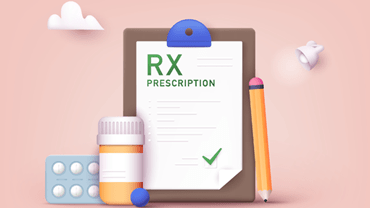 Briefing
Briefing
National Emergency Period and Outbreak Guidance for Health Benefit Plans
The Employee Benefits Security Administration (EBSA) branch of the U.S. Department of Labor (DOL) has released the Disaster Relief Notice 2021-01, with additional coordination and review of the guidance by the Department of Treasury, the Department of Health and Human Services (HHS), and the Internal Revenue Service (IRS). The Notice serves as an official and long-awaited response to the questions surrounding the timeframe to bring the COBRA and HIPAA Outbreak Periods to an end.
Initially implemented by the Trump Administration with an effective date of March 1, 2020, the relief halted the timelines for the COBRA and HIPAA Special Enrollment Periods (encompassing deadlines pertaining to election windows, initial payments, claims and appeals, and grace periods) due to the COVID-19 pandemic. The National Emergency has now come to an unceremonious end. The Notice highlights ERISA law and the Internal Revenue Code (IRC) prohibiting a National Emergency Period to last for more than one year.
According to the EBSA guidance, "individuals and plans with timeframes that are subject to the relief under the Notices will have the applicable periods under the Notices disregarded until the earlier of (a) 1 year from the date they were first eligible for relief, or (b) 60 days after the announced end of the National Emergency (the end of the Outbreak Period). On the applicable date, the timeframes for individuals and plans with periods that were previously disregarded under the Notices will resume. In no case will a disregarded period exceed 1 year."
In practice, the duration of the relief will essentially 'un-pause' the timeframes on a person-by-person basis, based on the "earlier of" either (i) one (1) year from the date an individual was first eligible for relief, or (ii) 60 days after the announced end of the National Emergency (the end of the Outbreak Period).
The examples provided in the guidance include:
- If a QB (Qualified Beneficiary) would otherwise be required to make a COBRA election by March 1, 2020, the Joint Notice delays that requirement until February 28, 2021, which is the earlier of 1 year from March 1, 2020 or the end of the Outbreak Period (which remains ongoing).
- Similarly, if a QB would otherwise be required to make a COBRA election by March 1, 2021, the Joint Notice delays that election requirement until the earlier of 1 year from that date (i.e., March 1, 2022) or the end of the Outbreak Period.
- If a plan would have been required to furnish a notice or disclosure by March 1, 2020, the relief under the Notices would end with respect to that notice or disclosure on February 28, 2021. The responsible plan fiduciary would be required to ensure that the notice or disclosure was furnished on or before March 1, 2021.
We anticipate that tracking these individual dates will bring forth some degree of strain from an administrative standpoint.
The DOL does recognize that affected plan participants and beneficiaries may continue to encounter an array of problems due to the ongoing nature of the COVID-19 pandemic in circumstances under which relief under the Notices is no longer available due to the statutory one-year limit on the Agencies' authority to grant relief. The guiding principle for administering employee benefit plans is to act reasonably, prudently, and in the interest of the workers and their families who rely on their health, retirement, and other employee benefit plans for their physical and economic well-being.
- This means that plan fiduciaries should make reasonable accommodations to prevent the loss of or undue delay in payment of benefits in such cases and should take steps to minimize the possibility of individuals losing benefits because of a failure to comply with pre-established time frames.
- For example, where the plan administrator or other responsible plan fiduciary knows, or should reasonably know, that the end of the relief period for an individual action is exposing a participant or beneficiary to a risk of losing protections, benefits, or rights under the plan, the administrator or other fiduciary should consider affirmatively sending a notice regarding the end of the relief period
Additional Links and References
|
Issue Date |
Notice / Link |
|
January 26, 2021 |
|
|
October 21, 2020 |
COVID-19 Public Health Emergency Declaration Renewed; Further Extends Group Health Plan Deadlines |
|
May 12, 2020 |
Guidance Issued on HIPAA Special Enrollment Rights, Claims Procedures and External Deadlines |
|
May 11, 2020 |
|
|
April 29, 2020 |
DOL Issues COVID-19 Relief and Guidance for Employee Benefit Plans |
Keenan & Associates is not a law firm and no opinion, suggestion, or recommendation of the firm or its employees shall constitute legal advice. Clients are advised to consult with their own attorney for a determination of their legal rights, responsibilities and liabilities, including the interpretation of any statute or regulation, or its application to the clients’ business activities.
Subscribe
Subscribe to the Keenan Blog




